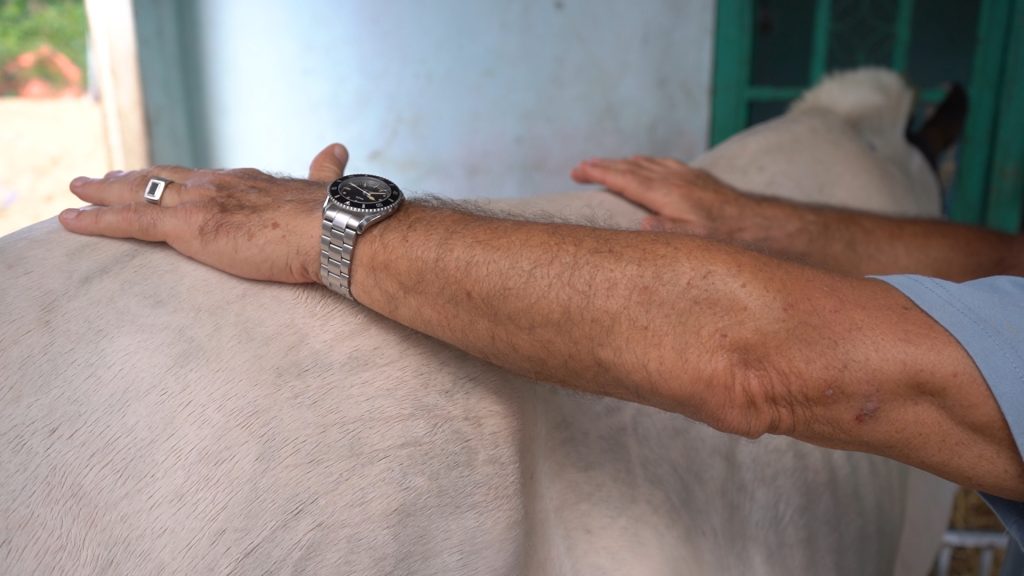
Equine massage therapy, cranial sacral therapy, and myofascial release, are all holistic approaches to improving the well-being and performance of horses. Here’s a brief overview of each:
1.Equine Cranial Sacral Therapy: This therapy focuses on the cranial sacral system, which includes the bones of the skull, spine, and sacrum, as well as the cerebrospinal fluid that surrounds the brain and spinal cord. PractitionerS use gentle manipulation of these structures to release tension and promote balance within the horse’s body. The goal is to enhance the horse’s overall health and performance by improving the function of the nervous system and addressing issues such as head and mouth issues as well as TMJ problems, and spinal misalignments.
2. Equine Myofascial Release: Fascia is a connective tissue that surrounds muscles, bones, and organs in the body. Myofascial release techniques involve applying sustained pressure to the fascia to release tension and restore mobility. In equine myofascial release therapy, we use hands to locate areas of tightness or restriction in the horse’s body and apply gentle pressure to encourage relaxation and release. This can help improve flexibility, range of motion, and overall comfort for the horse.
3. Equine Massage Therapy: Equine massage therapy involves the manipulation of soft tissues, such as muscles and tendons, to alleviate tension, improve circulation, and promote relaxation. Massage techniques vary widely and may include stroking, kneading, compression, and stretching movements. Equine massage therapists often work with horses to address specific issues such as muscle soreness, stiffness, or injuries, as well as to help prevent injuries and enhance performance. Massage therapy can also have psychological benefits for horses, helping to reduce stress and promote a sense of well-being.
These therapies are often used in conjunction with other holistic approaches, such as chiropractic care, acupuncture, and herbal medicine, to provide comprehensive support for the horse’s health and well-being.
Leave a Reply